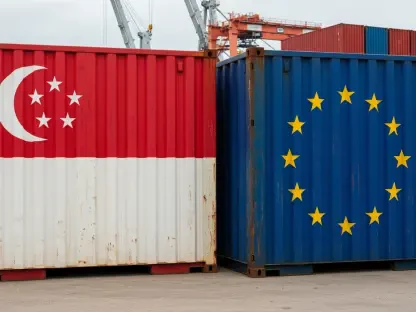Setting the Stage
A package network wins on density, trust, and cost control, yet it falters when volumes thin and fixed costs refuse to bend. That is the tension shaping the U.S. Postal Service’s path as packages take center stage while traditional mail continues to slide. The market has cooled from pandemic peaks, e-commerce has normalized, and shippers want reliability without paying express premiums.
In this climate, USPS is leaning into what it does better than anyone: universal daily reach, expansive delivery density, and a last-mile footprint that can be monetized for merchants, consolidators, and integrators. The bet is clear—make Ground Advantage the dependable, day-definite anchor, sell first- and last-mile capacity as a platform, and let partners handle more of the middle mile.
Market Dynamics And Strategic Pivot
The parcel arena remains crowded and fast-moving. UPS, FedEx, Amazon Logistics, regionals, and consolidators are retooling networks through automation, dynamic routing, and sharper pricing. Against that backdrop, USPS’s advantage lies in ubiquitous access points, a six-day network, and address coverage that underpins both dense urban routes and high-cost rural stops. Policy and regulatory frameworks still matter, from service standards and price-setting rules to customs, de minimis thresholds, and international settlements that shape cross-border flows.
The near-term playbook emphasizes a mix shift toward economy ground as Priority Mail and other premium products soften. January rate increases are designed to lift revenue without tipping price elasticity beyond competitive bounds. Service reliability, consistent delivery, and tighter data integrations with merchant systems become practical differentiators, particularly as returns rise and mid-market shippers consolidate volumes with fewer carriers.
Numbers, Risks, And Execution
Forecasts point to shipping and packages revenue up 9.4% year over year, pushing overall revenue up 2.9% despite a projected 6.6% decline in total mail and package volume. International remains a drag, with a 42% revenue drop and a 56% fall in inbound services amid policy shifts that have cooled U.S.-bound flows. The baseline showed the model can work: revenue grew 1% with volumes down 5.7%, and Ground Advantage outperformed.
Cost discipline is central. Planned work hours are set to decline 1.1%, aided by nearly 10,500 early retirements and tighter deployment. Sensitivities include price elasticity, delivery density erosion, and defections if service slips. The right KPIs—revenue per piece, cost per delivery point, on-time performance, and the share of first-/last-mile contracts—signal whether strategy and unit economics are holding.
Outlook And Next Steps
The path forward favored scaling first-/last-mile partnerships with consolidators, 3PLs, and marketplaces; strengthening Ground Advantage reliability and tools; and enforcing disciplined, segmented pricing. Network optimization through Sorting & Delivery Centers, improved surface flows, and zone rationalization paired with automation, route optimization, and real-time visibility provided the operating backbone. International repositioning prioritized profitable lanes, compliance-led products, and selective bilateral deals.
This outlook was constructive but sober. Hitting FY2026 goals depended on executing January pricing cleanly, locking in high-density partners, and defending on-time performance while trimming costs. Success indicators included a steady uplift in revenue per piece, stable service levels, lower unit costs, and a growing pipeline of first-/last-mile agreements. Done well, the strategy expanded profitable lanes, contained risk from international headwinds, and kept financial momentum on track.









